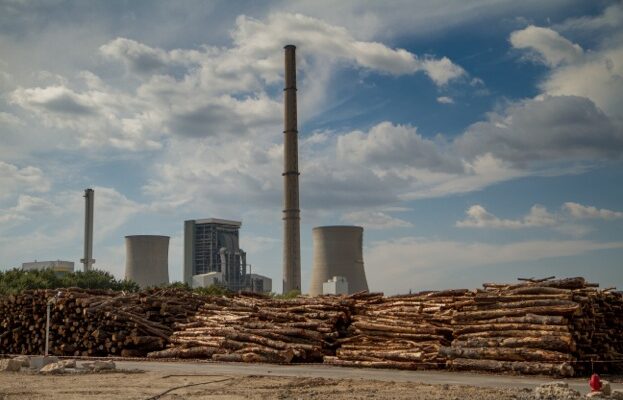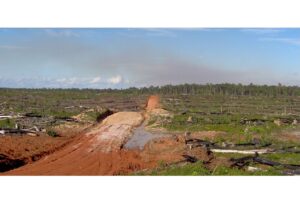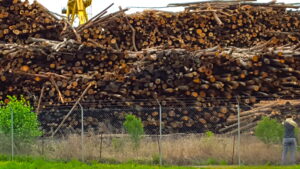Leaked Renewable Energy Directive fails the test on bioenergy
By Sini Eräjää, EU Bioenergy Policy Officer, Birdlife Europe and Central Asia and the European Environmental Bureau.
Negotiations in the European Commission about new legislation on renewable energy are gearing up. Leaks of the negotiated text earlier this week in the press (e.g. ENDS and Politico) show clearly that the sustainability of bioenergy remains one of the most hotly debated topics.
Scarily enough, the draft version of the Renewable Energy Directive leaves the mess around bioenergy completely unresolved. This threatens to plunge the EU into another embarrassing race to the bottom on bioenergy. The problems and sustainability risks of bioenergy are well known by now and leaving them unresolved – only to wait for more problems and evidence to pile up – won’t make them go away.
The one welcome proposal in the draft directive is the ending of public subsidies to inefficient electricity-only plants burning biomass. The old coal power plants, now burning wood and relying on imported pellets from the US, are admittedly the darkest part of the European bioenergy story. But this is definitely the right signal for renewable energy markets. But as legislators would still want to protect existing investments and granted support schemes, the overall positive impact on biomass use in general will remain very small.
In fact, the reduction of biomass use in the electricity sector might very well be cancelled out by the new proposed targets for renewables in heating and in transport. As around 90% of renewable heating today is bioenergy, a target to increase the share of renewable energy in heating and cooling by 1% every year will easily turn into a bioenergy target. Compared to today’s heating demand this could add up to 50 metric tons of energy (Mtoe) of additional, annual bioenergy demand by 2030 [1], which would push bioenergy demand even further beyond the limits of what is sustainable.
For transport the Commission is planning a specific target for biofuels that would once again drive increased volumes of biofuels, without paying much attention to their performance or quality. Even if first generation biofuels from food crops would be excluded from this target, it would apply for example to all biofuels made out of wood or energy crops. As a result, overall biomass use will be increased without any adequate safeguards or limitations.
The only sustainability requirements considered for bioenergy seem to be an extension of the existing criteria for biofuels to also cover solid biomass. These criteria turned out to be highly inadequate to even ensure the sustainability of biofuels, forcing the EU to revise the policy in 2014. It is hence hard to see how these same criteria could be able to ensure the sustainability of the rest of the bioenergy. Criteria just to ‘greenwash’ all bioenergy sustainable are not what the EU needs.
What would still make an earnest difference for the future use of bioenergy would be measures to phase out the industrial scale use of whole trees and crops for energy. Energy use of crops that require agricultural land and of whole trees are already known to bear the highest risks in terms of environmental and climate impacts. The EU needs firm measures to limit these. On food based biofuels the EU has already committed to a ‘phase out’ but this should be extended to the rest of land grabbing crops and to other energy uses as well, and lowered to zero by 2030.
A combination of new targets to increase the use of biomass in heating and transport without these kinds of necessary safeguards would be the start of more unresolved policy turmoil for the next years that wouldn’t benefit either the environment or the industry.
[1] Heating and cooling demand in 2015 was 493 Mtoe of which 77 Mtoe was bioenergy. 1% point of the current head demand is 5 Mtoe of energy (ignoring potential overall demand reduction in heating). If the whole target for renewables in heating was met with bioenergy, this add another 50 Mtoe of annual bioenergy demand by 2030.
Banner photo: Energy Wood at Uniper Power Plant – Gardanne, South of France © Nicholas Bell





